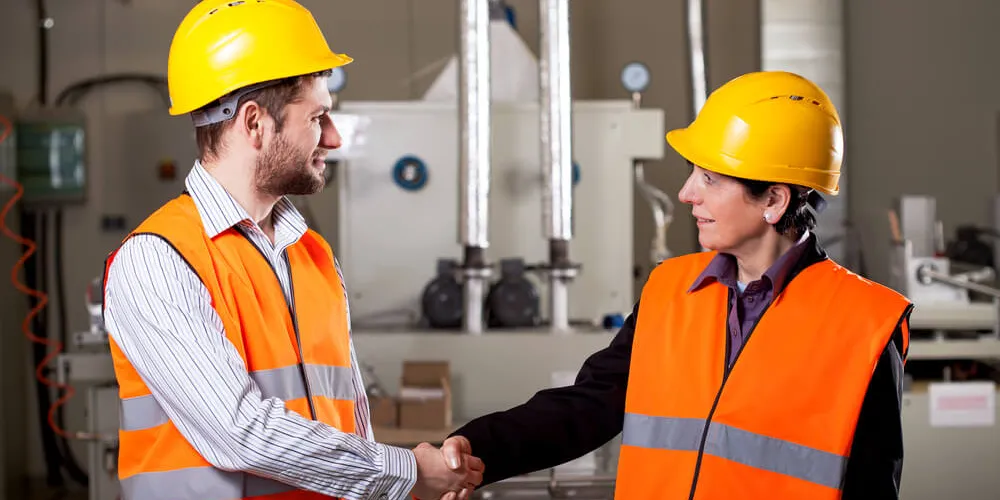
Engineers have a critical role to play in reducing the environmental impact of industrial processes and products – and having the right data can help
According to the RS and Chartered Institute of Procurement and Supply (CIPS) Indirect Procurement Report 2021, ethical and sustainable procurement is now one of the top three business pressures facing procurement professionals – and more than half of respondents to the report’s survey said their organisation has a carbon reduction strategy in place.
These findings reflect wider developments in the business world. Environmental, Social and Governance (ESG) criteria play an increasingly important role in attracting customers and employers as well as support from investors and shareholders, while legislation requires firms to provide information on their greenhouse gas emissions.
In response, many companies are looking both to reduce energy consumption and move away from fossil fuels to renewable energy sources. The 2022 Executive Survey by manufacturing association Make UK, for example, stated that almost half of firms plan to invest in green technologies or energy-efficiency measures over the following year.
These changes alone, however, are not enough to make in-house operations carbon neutral. More is needed to achieve the transition to net zero emissions by 2050 – and engineering can play a major part in this.
Creating scalable solutions
By developing and improving sustainable processes, whether that’s redesigning products using more sustainable materials or deploying technology to improve the performance of manufacturing facilities, engineering can support all industries in the move towards a green economy.
“Engineers play that critical role of making an idea into something that can be scaled”
Aleida Rois, senior vice president of engineering, BP
Turning ideas into action requires research and development – and this needs to happen more quickly than at present. As Aleida Rois, senior vice president of engineering at energy giant BP, commented in an interview with global management consultancy McKinsey, “Our industry needs entirely new ways of working. We need to take new ideas and incubate and scale them much faster than we’ve ever done before.
“Engineers play that critical role of making an idea into something that can be scaled.”
Efforts to create net-zero concrete provide a real-world example of this. With a coalition of heavyweight construction and property companies having pledged to be using this by 2050, researchers are exploring ways to achieve this by using technologies such as carbon capture and electrified production.
Making data-led decisions
Being prepared to challenge the status quo is one of the six key principles of sustainability identified by the Engineering Council. Another is using resources efficiently and effectively, and performance monitoring equipment can help with the former. The data that it generates, for instance, can inform decision making.
“Engineers need data to solve problems”
Richard Jeffers, founder and managing director, RS Industria
“Engineers need data to solve problems,” says Richard Jeffers, founder and managing director of RS Industria, a plug-and-play IIoT platform. “By accessing live data direct from assets, you remove debates around the quality of the data and if you have sufficient granularity, you can focus on what the data is telling you.
“By choosing the right data, you can use it to address problems as diverse as predictive maintenance, operational loss identification and eradication and achieving net zero through understanding energy losses.”
Leading industry-wide changes
An example of more efficient and effective use of resources comes from the UK automotive industry. According to the Society of Motor Manufacturers and Traders 2022 Sustainability Report, reductions in the amount of water used and the amount of waste produced during the manufacturing process contributed to the sector’s carbon footprint shrinking by 11.2% in 2021 to the lowest level ever recorded.
There are other examples from the automotive industry too. Remanufacturing, where products are designed so that they can be easily disassembled and the components replaced or reused, is on the increase. Industry titan Toyota is doing more in this area, as is digital technology multinational ABB.
“Drive positive change…across the wider industry and value chain”
Russell Down, chief executive, Speedy Services
In a different field altogether, tool and equipment hire firm Speedy Services is helping contractors to reduce on-site emissions and fuel consumption by introducing the UK’s first range of high-performance outdoor lighting towers that are battery operated. The company’s chief executive, Russell Down, argues that this innovation and others adopted by the business “will drive positive change not only across Speedy but across the wider industry and value chain.”
Supporting business goals
There are clear business benefits to sustainable design and engineering as well. McKinsey found that although improving environmental performance may involve initial costs, effective execution of ESG could offset increasing operating expenses and affect operating profit by up to 60%.
“Someone has to have the courage to make the first move”
Kay Barker, UK environmental lead, Wienerberger
McKinsey therefore encourages CEOs to emphasise the positive impact that factory sustainability goals can have on the bottom line when looking to get support for ESG from managers who may have more traditional performance-based targets. “Someone has to have the courage to make the first move,” says Kay Barker, UK environmental lead at brickmakers Wienerberger, “to be visionary and brave in leading their organisation to the future.”

